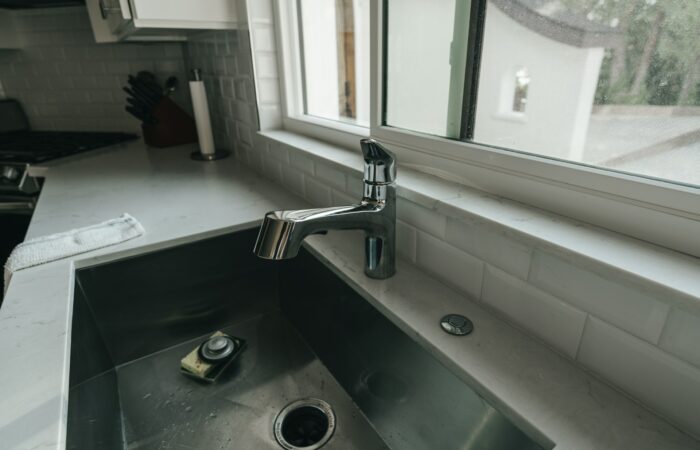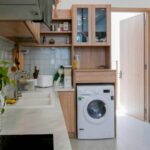
Setting up a home gym has never been more practical or accessible. With rising gym membership costs and busy schedules, finding ways to stay fit at home is on everyone’s mind.
This guide will show you how to create an effective home gym on a budget, highlight the essential workout equipment picks, and share creative tips for cost-effective training.
Expect practical recommendations for fitness at home, insights on making the most of your budget, and advice on maximizing workouts—even in small spaces.
Why Building a Home Gym is Worth It
Save Money Over Time
A home gym eliminates the recurring expense of gym memberships and commuting costs. Investing in key home gym equipment upfront can save you significant money over the long term.
Whether you want to focus on fundamental exercises like toes to bar or aim for a broad fitness routine, starting small is a realistic approach.
Convenience and Flexibility
Training at home means you can squeeze in a workout anytime, regardless of how packed your schedule is. No more waiting for machines or navigating crowded gyms. Your equipment is always available, allowing you to customize workouts on your own terms.
Privacy and Comfort
Working out at home removes many psychological barriers. Beginners can practice new moves, such as toes to bar, without feeling self-conscious in front of others.
The ability to create a comfortable, personal space can increase motivation and make consistent training more achievable.
Assessing Your Budget and Space
Determining Your Budget for Fitness at Home
Before starting your home gym project, define what you can realistically spend. Outline your top fitness goals—is your primary aim strength training, cardio, mobility, or a combination?
This will guide your equipment choices and ensure you make cost-effective decisions.
Making the Most of Limited Space
Even a small area can become a highly functional gym. Measure the space you have, whether it’s a garage corner, a part of your living room, or a spare bedroom. Fitness at home is about smart planning:
- Opt for foldable or stackable equipment.
- Use vertical space for storage (think wall racks or shelves).
- Keep the floor clear with under-bed storage options for lighter items.
Top Versatile Equipment for a Budget Home Gym
Resistance Bands and Tubes
Lightweight, portable, and inexpensive, resistance bands are must-haves for any budget fitness plan. They help improve strength, mobility, and flexibility. Use them for glute activation, arm workouts, rows, or assisted toes to bar exercises.
Adjustable Dumbbells
Rather than buying a set of single-weight dumbbells, invest in adjustable models. They provide a full range of weights while saving money and space. Use them for presses, lunges, curls, and more for cost-effective training.
Jump Rope
A jump rope is a high-impact cardio tool that costs very little and delivers results fast. It’s easy to store, great for all fitness levels, and perfect for interval or endurance workouts.
Pull-Up Bar
Doorway or wall-mounted pull-up bars offer endless upper-body workout options. Strengthen your back, arms, and core with exercises like pull-ups, chin-ups, and toes to bar. Many bars are affordable, easy to install, and don’t damage walls or door frames.
Stability Ball
A stability ball lets you work on balance, core strength, and flexibility. It doubles as a bench for chest presses or squats and stores easily when not in use.
Yoga Mat
A comfortable, non-slip mat creates a designated area for stretching, mobility, Pilates, or bodyweight exercises. It also protects your floors and equipment.
Prioritize Multi-Use Equipment for Cost-Effective Training
Look for Versatility
Pick equipment that supports more than one type of workout. For example:
- A kettlebell can be used for swings, squats, presses, and core routines.
- Resistance bands support both strength and mobility training.
- An adjustable bench can be set for flat, incline, or decline movements.
Explore Secondhand Options
Many high-quality home gym items can be found used at local thrift stores, garage sales, or online marketplaces. Search for lightly used weights, cardio machines, or racks. Always check condition and stability before buying.
DIY Fitness Gear
Save further by crafting your own gear. Fill old milk jugs with sand for makeshift weights or stack towels for step-ups. Simple creativity can help you stretch your budget and personalize your routine.
Efficient Workout Programming at Home
Bodyweight Workouts
Your body is the best tool you have. Exercises like squats, lunges, planks, push-ups, mountain climbers, and toes to bar require zero equipment and burn calories efficiently. Mix upper and lower body movements for full-body impact.
Circuit Training for Short Sessions
Circuits maximize calorie burn and build muscle in minimal time. Set up a simple circuit:
- 30 seconds jump rope
- 30 seconds push-ups
- 30 seconds goblet squats with a kettlebell (or other weight)
- 30 seconds pull-ups or assisted variation
- 30 seconds planks or stability ball rollouts
Repeat for several rounds with short rests in between.
Goal Setting and Progress Tracking
Fitness at home keeps you in control of your goals. Regularly check your progress by noting reps, weights, or times. Use free mobile apps or a simple notebook for tracking; this feedback helps keep you motivated and signals when it’s time to challenge yourself further.
Design Your Training Space for Motivation
Create a Dedicated Area
Even if it’s a small corner, designate a space for exercise to boost consistency. Put your mat, weights, and bands where you can see them.
Use Visual Inspiration
Hang up a calendar, progress chart, or motivational quote on the wall. A mirror is great for checking form and gives the illusion of more space.
Keep It Organized
Store equipment in baskets or on shelves. An organized home gym means less time setting up and more time training. When everything has its place, you’ll be less likely to skip sessions.
Stretch Your Budget Further With Smart Upgrades
Gradual Equipment Investments
Start small and build as you go. Once you’ve nailed the basics, add more specialized gear one piece at a time. Focus on tools you’ll use often, such as:
- Plyometric box for jumping and step-ups.
- Suspension trainer for bodyweight rows and challenging core moves.
- Foam rollers for recovery and flexibility.
Watch for Sales and Deals
Fitness retailers often run seasonal sales or offer package deals on home gym equipment. Sign up for brand newsletters or follow stores on social media for discount alerts.
Join Online Communities
Seek advice from fellow fitness enthusiasts in online forums or social media groups. They often share tips on where to score affordable equipment and how to make the most of a budget workout space.
Steps Forward for Cost-Effective Fitness at Home
Building a budget-friendly home gym is all about smart choices and strategic planning. Whether you’re tightening up your routine with resistance bands, improving strength with toes to bar on your pull-up bar, or optimizing every inch of your space, consistency is key.
Assess your needs, invest wisely, and remember that fitness at home is customizable for your goals and lifestyle.
Start simple, focus on versatile equipment, and adapt as you grow. Each workout gets you closer to your goals. With the right setup and mindset, your budget home gym will become a lasting part of your health and wellness routine.
Subscribe To Get Update Latest Blog Post
No Credit Card Required









